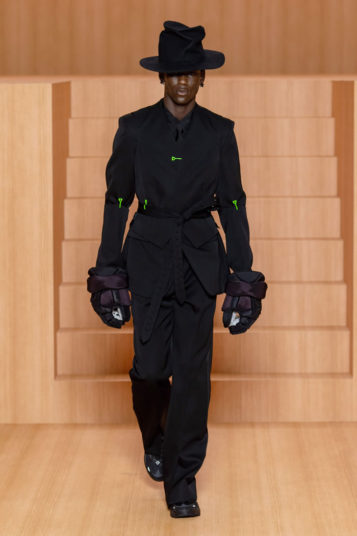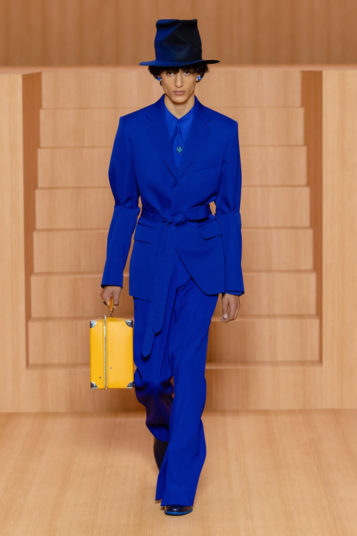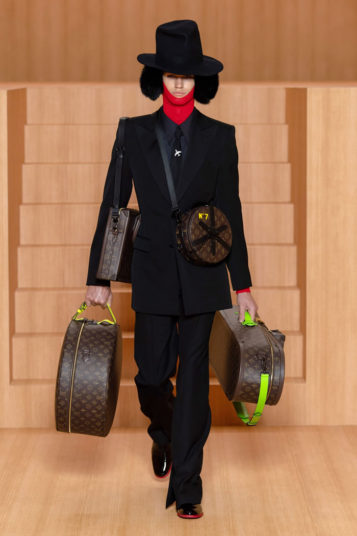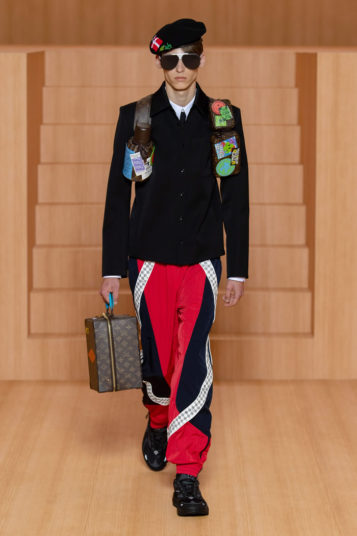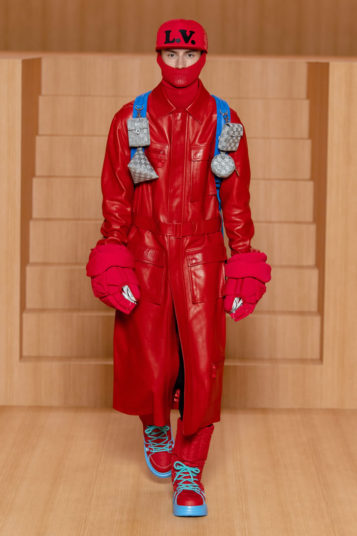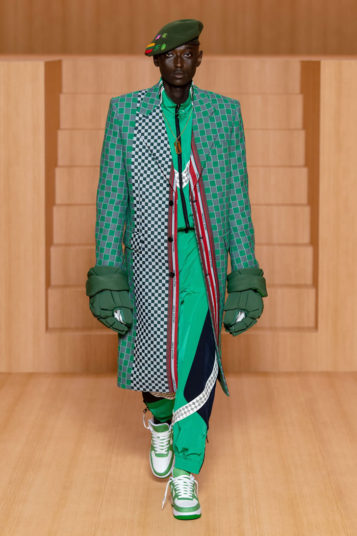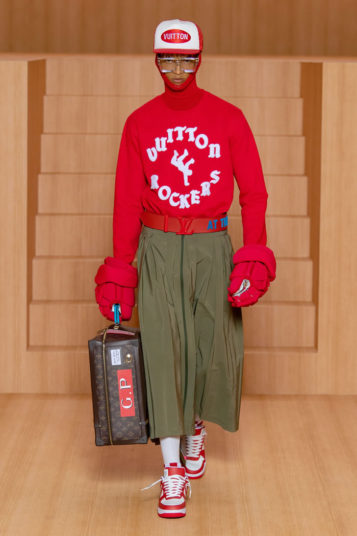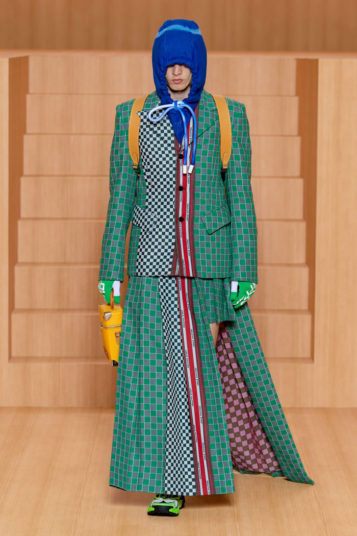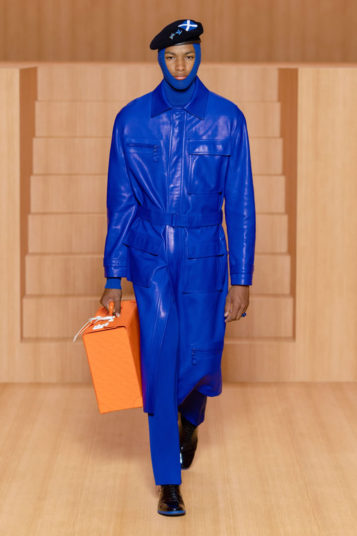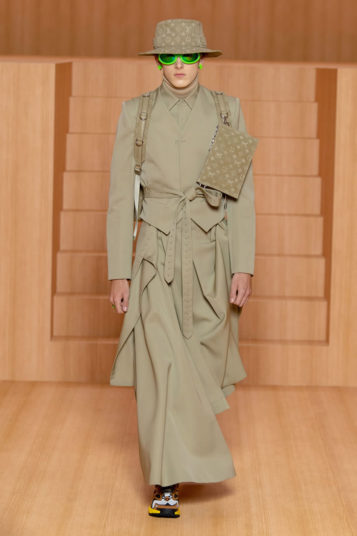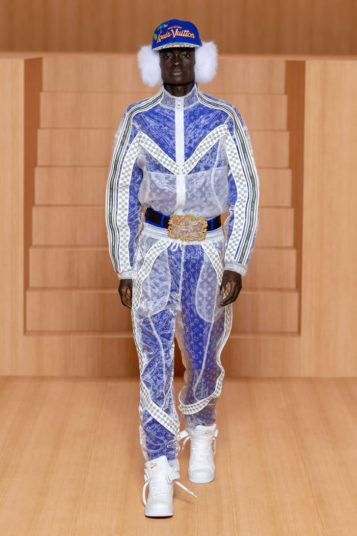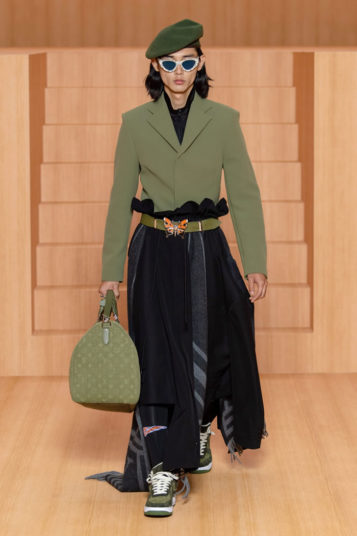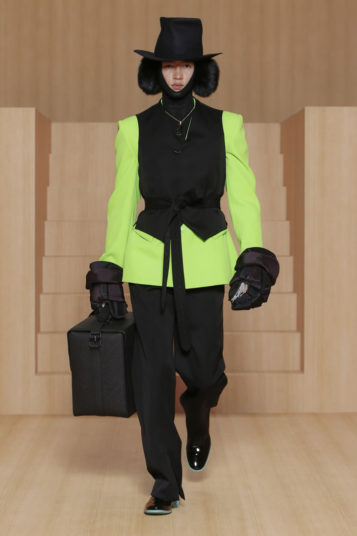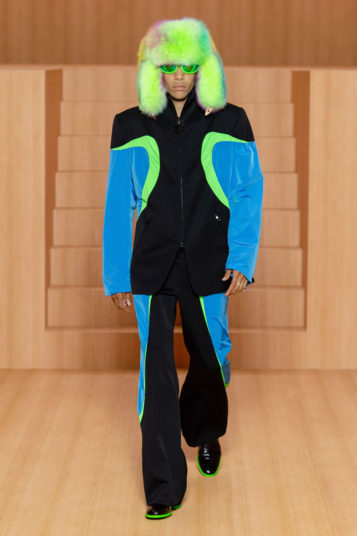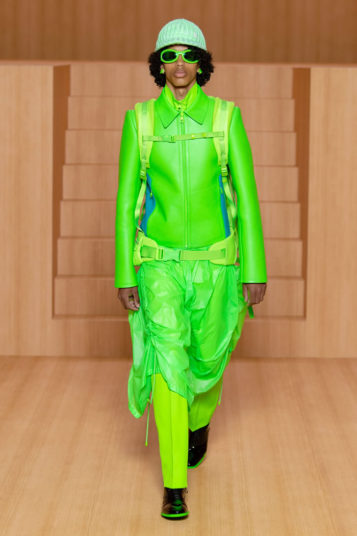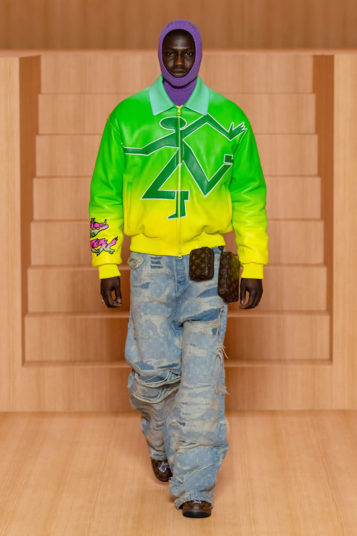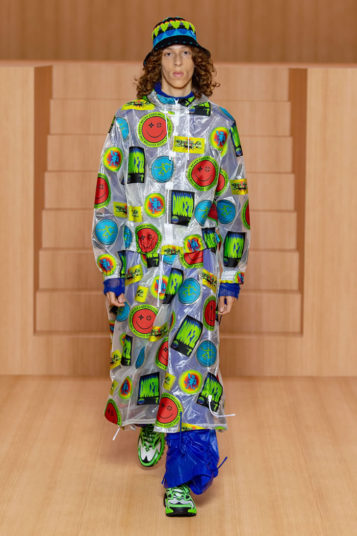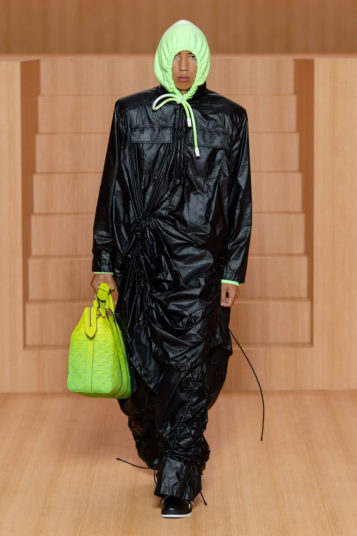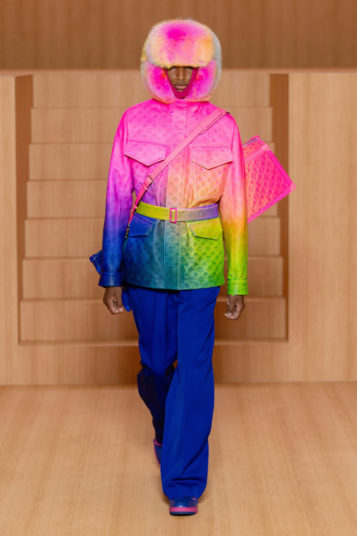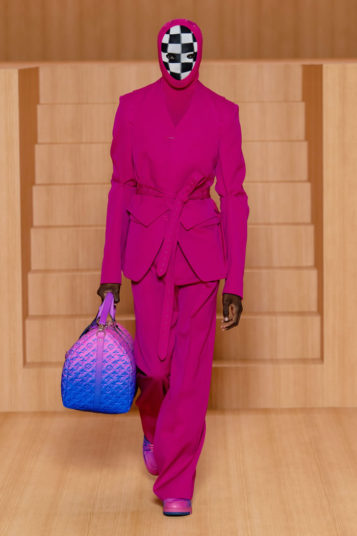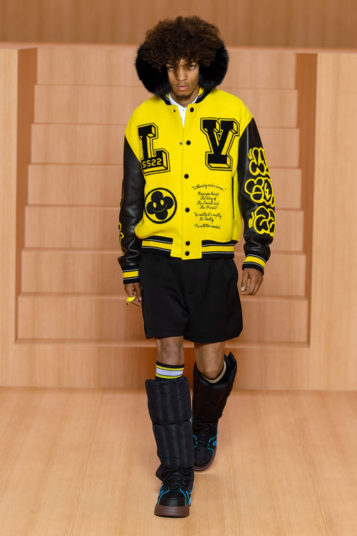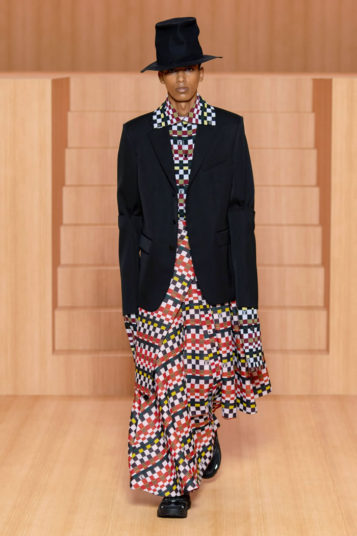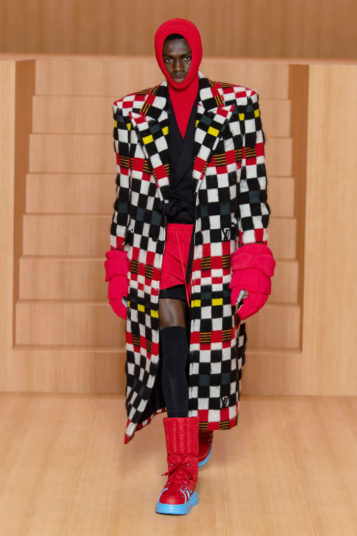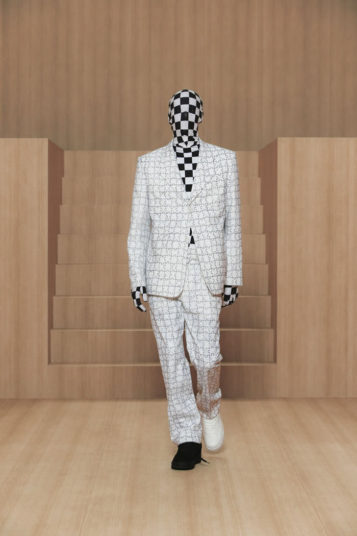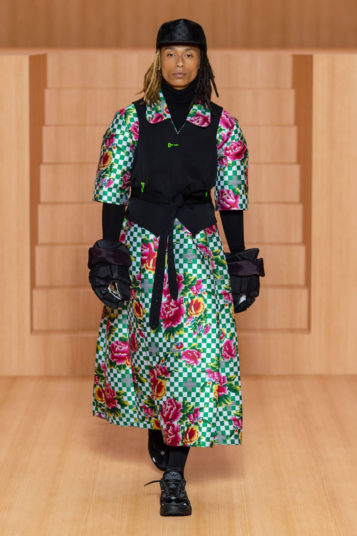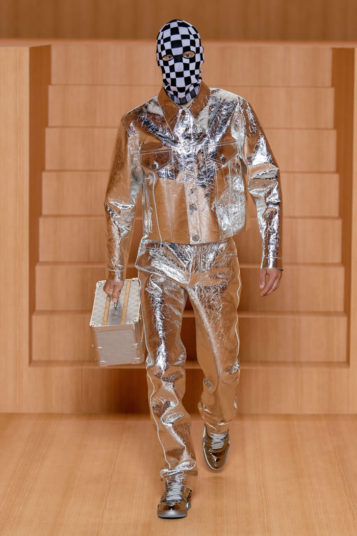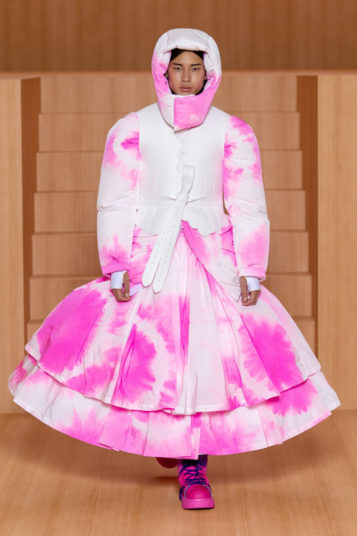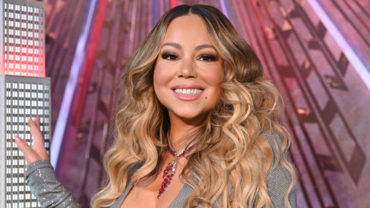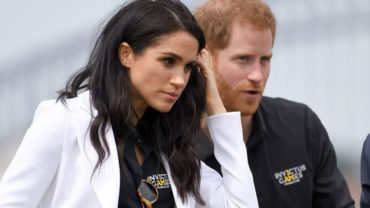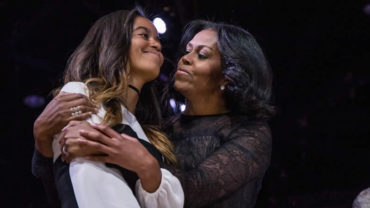“And it’s now sync-ed up with my true thoughts about culture.” Abloh’s multi-layered, multi-referenced filmmaking in the time of pandemic has taken him to a place of collective communication where he’s uplifting and materializing far more than clothes on a runway.
“I’ve started to let my imagination run wild,” he said. “I try to create the world as I would like to see it in real life. Having something that’s pop culture and fashion, that’s an education, and maybe opens minds. To me, that’s the North Star.”
Questioning designers about where their inspirations “come from” is a typical fashion-editor gambit, while “who copied who” is the accusatory game of the internet.
This time, Abloh essentially took that on and check-mated it with his knowledge of Black music’s revolutionary creative methods of sampling, of how Hip-Hop and Jungle evolved into Rave through subcultures, countries, and time until the genius of the provenance is all simultaneously embedded, normalized, and erased in the mainstream.
That’s where the vast Black cultural global fashion influence of tracksuits and sneakers “comes from”— uncredited. And it’s where, at the very top of the menswear establishment, it faces off with the in-the-know formalities surrounding the sartorial canon of the suit.
“When it comes to the nuance of Black culture and design, how does it show up? How does that become canonized? I stand in a very privileged position to be able to educate on that.”
Abloh named the collection and its film Amen Break – a perfect metaphoric illustration of how an original drum break recorded by The Winstons, a funk and soul group, in 1969, became the most-sampled drum break ever.
“I called the collection that, because I think it’s so profound: this idea that something can be iterated on by so many artists in so many songs, to the point where it melts away—they weren’t compensated for it, by the way. And people don’t know that the drum pattern in their favorite song was from a very specific soul song—and it’s a sampler that makes it possible.”
In that way, Abloh actively joins his weight from the point of view of Black authority to the live debate about ‘hacking,’ reappropriation and source-sharing that has been batting between Gucci’s Alessandro Michele and Balenciaga’s Demna Gvasalia.
If there’s a contest on “ who did it first” to create new significance and new looks out of the already existing – then it all points to who was doing what in Black culture, music, and style in America in the 1970s and ’80s. All of this is documented and factually backed up in the 40-plus pages of Abloh’s show notes.
But to the collection. Abloh took chess as one of his organizing themes—for salient, timely reasons beyond the binary clash between the cultures of suits and tracksuits.
“The game of chess, as it relates to life. This idea of two entities that always battle in a strategic way. Also, how the same pieces are divided by color on the board, that makes them inherently at odds,” he said. “ I thought there were some great parallels as we come out of 2020 in the cultural context. Then I linked that to the Damier print in the Louis Vuitton archive. So I was looking at the brand, interpreting things through a historical lens.”
It gave him and his stylist Ibrahim Kamara the keynote for the ‘chess-piece silhouettes’—identified by tall hats and furry head-phone headgear, and the long lines of skirts, “like the queen, the knights, and pawns, perhaps.
That’s where the dream-like sort of silhouettes began to take shape. And the other half of the collection is the battling opposite, all the gray suits.” The bright colors and tie-dyed semiotics of rave—neon green, yellow, electric blue—jump out of the lookbook pictures: lots of cheerful, grabby fashion fun there for next spring.
But there’s yet more loaded symbolism that intersects with the skirted shapes, the padded vests, and armor-plated puffers in the show. For that, Abloh had centered himself on the imagery of Kendo, the Japanese martial art, a reference honoring the memory of the Wu-Tang Clan and how hip-hop brought the knowledge and influence of Japanese and Chinese martial arts into his youth.
“I very much appreciated those narratives about how martial arts spread across different cultures and becomes something new wherever it lands, and that was key,” he reflected.
“Diversity represents highlighting other cultures, not just my own—and making space to share those. The things we’ve seen in the pandemic regarding Black culture and Asian culture, to me are enough to make me want to keep diversity at the forefront of how I think about what fashion is today.”
In the film, directed by Mahfuz Sultan, and star-studded with heroes like Goldie, a sense of male-world tension and the underlying threat of masculine competition ran through the non-linear narrative.
Where it ‘came from’ was Abloh’s absorption of The Lone Wolf and Cub movie when he was a child in Chicago. Where he took it, though, was very much of now: the idea of a father protecting and teaching his child to survive through the trials and perils of the dangerous world. “That very much fits into my overarching ethos about boyhood.
They’re navigating through these landscapes—and through the chess game—the turmoil of it,” he said. “It’s just metaphoric: parent and offspring, the layer of protection that’s needed in uncertainty.”
COLLECTION

